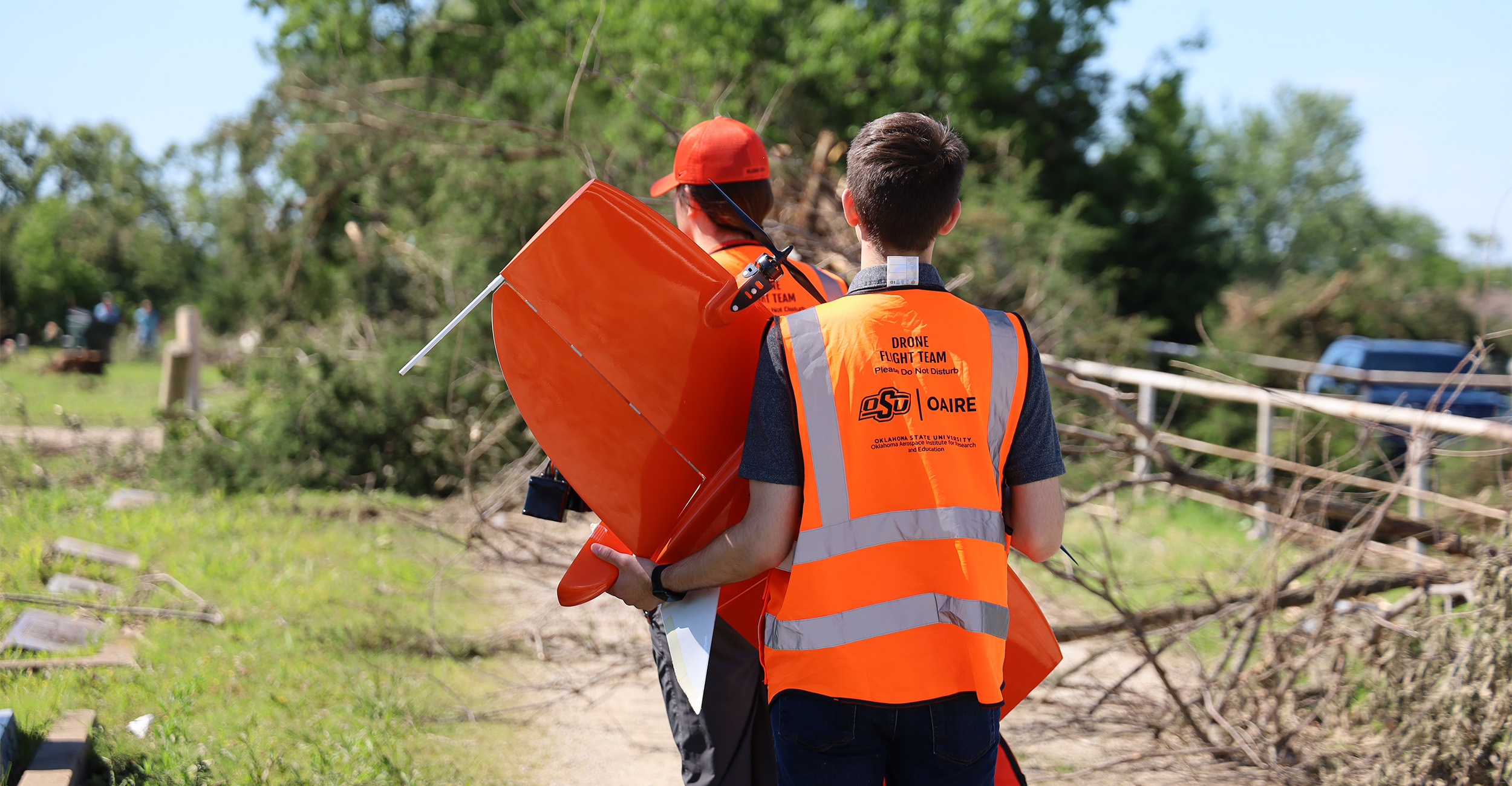
OSU receives $5.5M to conduct low-atmosphere weather research
Wednesday, September 25, 2024
Media Contact: Jeff Hopper | Communications and Media Relations Manager | 405-744-5827 | jeff.hopper@okstate.edu
The National Institute of Standards and Technology has awarded the Oklahoma Aerospace Institute for Research and Education (OAIRE) $5.5. million to research how weather impacts urban air mobility aircraft.
Operating under the umbrella of The Innovation Foundation at OSU, OAIRE received the funding in connection with the Consolidated Appropriations Act of 2024. These funds will contribute to research focused on the observation and investigation of low-atmosphere weather systems’ impact on Unmanned Aerial Systems (UAS) and Advanced Air Mobility aircraft.
“This funding will provide enormous benefit to Oklahoma and the nation by facilitating the safe and sustainable integration of small Unmanned Aircraft Systems and Advanced Air Mobility into the National Airspace System,” OSU President Kayse Shrum said.
“The enhanced coverage and precision of low-altitude weather data this project will provide will offer significant benefits.”
The project aims to integrate weather sensors into commercial UAS and AAM aircraft to collect, refine and disseminate weather data for use by other UAS and AAM aircraft, as well as other aircraft that operate at these low-atmosphere altitudes, such as emergency response aircraft.
Researchers hope the sensor integration will provide critical weather measurements that can then be analyzed and disseminated using a to-be-constructed network which falls in the project parameters, as well.
“This funding will solidify OAIRE’s capability as the leading facility in testing and evaluating Advanced Air Mobility systems for all weather operations,” said Dr. Jamey Jacob, Williams Chair in Energy Technology and OAIRE executive director.
“In order for uncrewed aircraft and urban air mobility platforms to reveal their full potential, they must be able to operate in all-weather environments. This includes use of drones for better weather forecasting in severe storms and post storm damage assessment. Our ability to prepare for various weather scenarios ties to our land-grant mission and serving Oklahomans.”
Rep. Frank Lucas and Sen. Markwayne Mullin were sponsors of the congressionally directed spending that funded the project. The project has also drawn support from Stillwater Mayor Will Joyce and Payne County Commissioner Chris Reding. This work was performed under the following financial assistance award 60NANB24D226 from U.S. Department of Commerce, National Institute of Standards and Technology.
“I’ve been proud to see my alma mater — Oklahoma State University — take initiatives in the aerospace industry and weather data sciences. I’ve spoken with President Shrum about the immense progress being made on campus in recent years, and it’s clear this community-funded project will only further its impact,” Lucas said.
“Those of us in Oklahoma know firsthand how important accurate weather predictions are to our livelihoods, and the funding made possible by this congressionally directed spending will enable OSU to take great strides in enhancing weather prediction through Unmanned Aircraft Systems. I’d like to thank President Shrum for her efforts and am excited to see what positive results this project will bring to our state.”
Launched in 2021, OAIRE continues to propel research and innovation while cementing Oklahoma as a leader in aerospace.
“Oklahoma State University is leading the way in the aerospace and aviation industry,” Mullin said. “These funds will allow their innovation to continue as they expand research into weather sensors in commercial unmanned aerial vehicles and advanced air mobility aircraft. I’m thrilled to share this news, and I also want to thank President Shrum for her leadership.”
